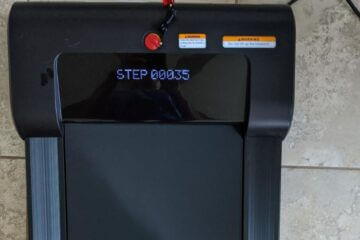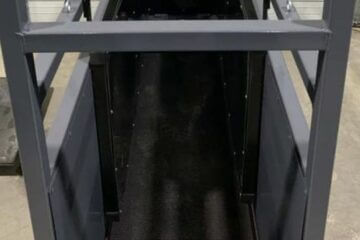Indeed, treadmills are a great way to lose weight, but are they safe enough to use? For years now, treadmills have been a great solution for working out at home. The treadmill provides accurate distances as well as saves you time and money.
But before we use it, we need to know the pros and cons of the treadmill. One of the biggest cons that people complain about is ‘why treadmill belt curling?’
During the first few days or weeks of use, it’s not unusual for a new treadmill’s owner to need to adjust the treadmill belt. During the initial weeks or months of use, the treadmill owner might feel “why treadmill belt curling?”
But this is completely normal during the break-in period. Because the belt adapts to your walking or running style over time, adjustments will need to be made much less frequently.
What Is Treadmill Belt Curling?
Every treadmill has a belt attached to the surface area of the machine. Sometimes, treadmill belts curl up on sides for various reasons, which is commonly known as treadmill belt curling.
In fact, treadmill belts can curl out after as little as two years of heavy use and, in some cases, as little as a year. To determine if a belt needs to be replaced, look for signs of wear such as curling on the edges, not staying straight, or slowing down when you step on it.
A treadmill takes longer than expected to get to a customer. To get to a customer, the treadmill may travel from a factory floor to a delivery truck, an ocean freight ship, an indoor storage facility, or even a specialty gym.
For a treadmill, that’s a lot of lifting and moving, rocking and rolling. And even after the treadmill is permanently installed, it still needs to be adjusted to its new surroundings.
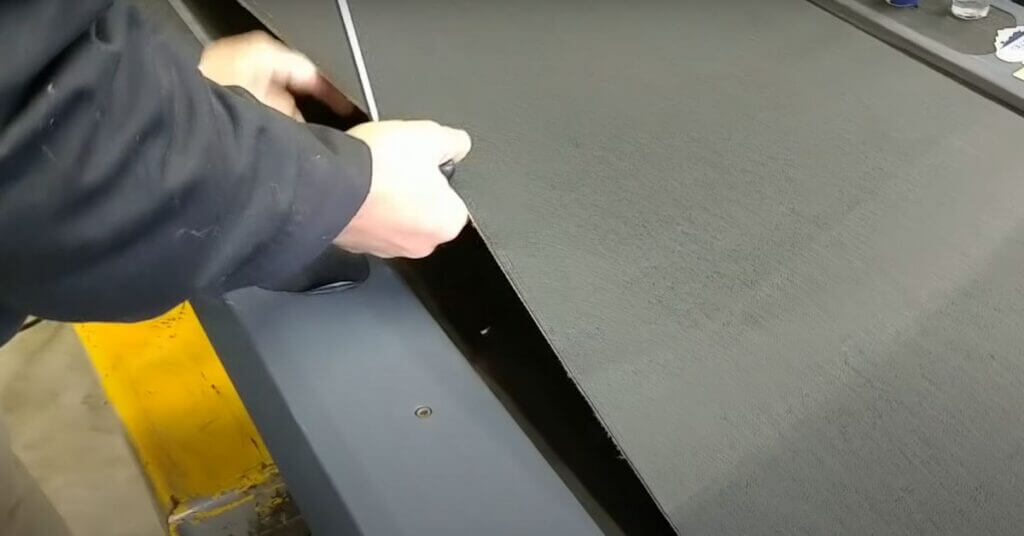
What Can Happen When Your Belt Curls?
There are always going to be problems with the treadmill belts, regardless of who makes the treadmills. If the belt on the treadmill is severely worn, you will need to replace it with a brand new one.
When the treadmill belt curls, it is in constant contact with the belt as it spins. That’s what causes the treadmill belt to bunch up in the middle when it reaches its maximum length. Moreover, when the belt curls, various types of accidents may also occur.
The Dangers of Treadmill Belt Curling
When in doubt, throw it out. Damaged or worn-out treadmill belts are hazardous to your safety and can quickly degrade the treadmill’s electrical components.
It is better to replace the belt than to risk an injury or a more costly repair. You should replace the belt instead of taking a greater risk of injury or costing yourself money in the future.
If you think that a simple belt curl can cause you nothing, then you can go through the reports below to get an idea of how harmful it could be.
According to a news report by the BBC, more than 24,000 treadmill-related injuries were reported to the CPSC last year, with slips and strains accounting for the majority of the incidents. People have had heart attacks as a result of working out.
On the other hand, you’re more likely to be killed by lightning than by running on a treadmill. As reported by the National Oceanic and Atmospheric Administration (NOAA), 261 people died in the United States from lightning strikes between 2006 and 2013. According to the New York Times, every year 25000 children are affected by home exercise types of equipment.
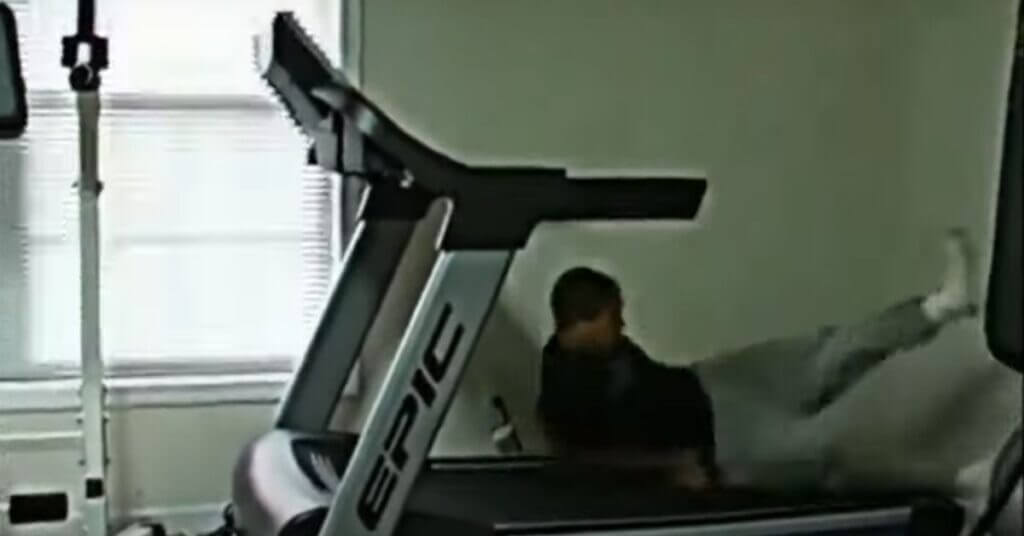
What are the Causes of Treadmill Belt Curling?
No matter which manufacturing company makes the treadmills, belt issues do occur. In terms of control, treadmills are simple machines.
Rollers are used to keep the belt track in place as you run as the belt moves quickly over the platform. If you know the treadmill’s proper mechanism, you’ll be able to identify the problem quickly and take the proper precautions.
In some situations, heavy usage can move the treadmill’s belt to the left and sometimes to the right after a while of use. Consequently, the treadmill’s belt is rubbing against the treadmill’s side rail cover or any other part of the treadmill’s exterior.
And it causes the treadmill belt to curl on the side. that is constantly in contact with the belt. That’s what causes the treadmill belt to bunch up in the middle when it gets to the end of its lifespan.
However, as your speed and pace increase, the friction between the belt and your feet on the system generates more friction, which is created as you run faster. Due to the increased friction, the materials in the belt experience an increase in heat, which makes the belt more flexible and vulnerable to displacement.
As a result, the belt may start to move a little bit beneath your feet. The shifting could cause the treadmill belt to shock wave, crease, or fold. If you use your treadmill frequently, the wear and tear on the device causes the tension between the belt and the rollers to loosen.
In addition, the tread belt begins to loosen after several months of daily or rough use. The belt could also be too tight. You can tell if your treadmill’s belt is too tight by lifting it up in the middle and checking. It should go up 2 or 3 inches.
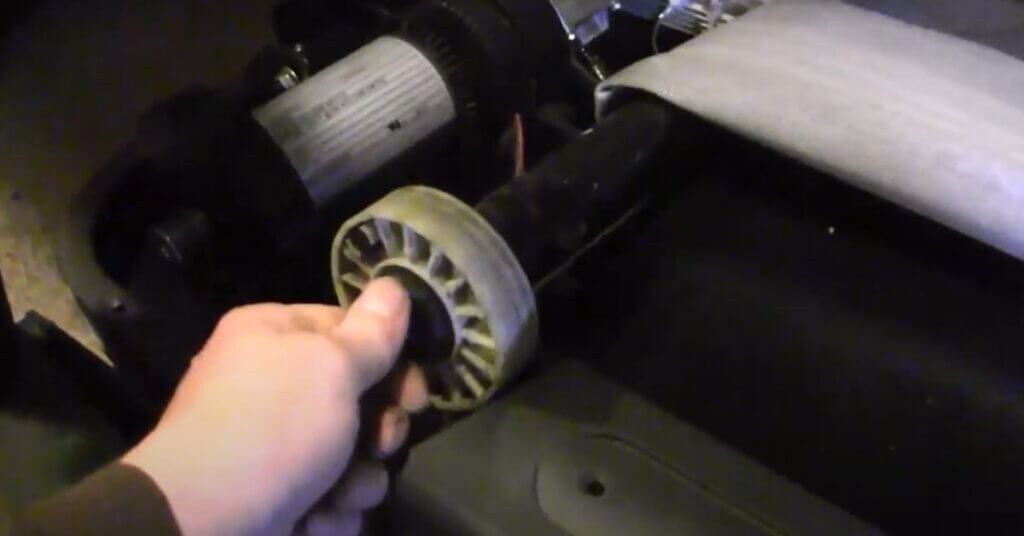
What Are the Solutions to Treadmill Belt Curling?
The good news is that it’s not as difficult as you might think to fix a folded, wrinkled, or replace belt on treadmill. Some TLC is all that’s needed; it’s like your treadmill pulled a muscle. No need to get rid of or give away your treadmill because of a belt issue.
You can save yourself hundreds of dollars in service costs by learning how to handle these maintenance issues on your own. This article examines a seven-step procedure for repairing a folded treadmill belt.
The belts on treadmills are designed to be used only once. If you notice a fold, crease, or ripple in the belt, you’ll need to be adjusting treadmill belt with a new one. Minor creasing and rippling of the material can be minimized by tightening the rollers and the belt tension.
Let’s look at how to fix a treadmill that got curled-
Step 1 – Identify the Issues
First and foremost, unplug the treadmill’s power cord. The next step is to identify the side of the belt that is causing the issue. When the roller is loosened, it tends to slide to one side of the platform.
Step 2 – Removing the Motor Cover
Using a screwdriver, remove the motor cover from the front of the machine. Pull up the treadmill platform with the latch in place and remove the motor cover.
Step 3 – Find the Rear Roller Bolts
The treadmill’s rear bolts can be found on either side of the end of the treadmill. If you can’t find them, you’ll have to remove the machine’s side foot rails. Screwdrivers with Philips’s heads work well for removing foot rails.
Step 4: Set the Rollers to the Correct Position
To loosen the roller bolts, use the Allen wrench that came with your treadmill. A replacement Allen key can be purchased at your local hardware store if you’ve misplaced your original. If you don’t know what size you need, ask the store clerk.
To tighten the belt, turn the rollers counterclockwise. Turn the bolt counter-clockwise to loosen it. Bolts should not be over tightened. A burned-out electric motor can be the result of excessive torque.
The entire belt may be loose if the roller bolts have to be tightened more than one full turn.
Step 5: Take Out the Rolling Pin
If the treadmill belt is severely damaged, you’ll have to get a new one. Defective belts can damage the rollers and put undue stress on the machine’s motor, resulting in a shorter machine life expectancy.
Fixing a folded treadmill belt may seem difficult, but the steps outlined here make it simple. On each side of the treadmill, loosen both rollers to their full extent. When the roller is completely loose, it is simple to remove it from the housing.
The belt can be removed by pulling it up and out of the way and then over the roller. Reinstall the roller by replacing the worn belt with the new one. Do not over tighten the rollers, but don’t under tighten either.
Step 6 – Check the Tracking
It’s important to make sure the treadmill belt tracks straight before reassembling. Watch the belt as it passes over the platform while the machine is running at a low speed.
Tighten the roller bolts on either side of the machine to compensate for the tracking shift. Getting the belt to run straight may take a few tries. In order to avoid wrinkles and folds, never use the treadmill if the belt is not perfectly straight.
Maintaining three to four inches of free-play between the belt and the platform is necessary for optimal belt tensioning. The motor performance will suffer if it is tighter than this.
Step 7 – Reassembling the Treadmill
Reassemble the machine once you’re sure the belt is running smoothly. Replacing the footrails may necessitate reversing the steps you took to disassemble the treadmill. This is the standard procedure for most models.
Pull the platform up and release the latch, then continue on your journey. Attach the frame by screwing in the corner bolts after the platform has been laid flat. Attach the motor cover to your footrails before attaching the cover. To avoid stripping the threads, make sure all screws are hand-tight.

What Should I Do If My Treadmill Belt Curls?
At some point in their lifetime, all machines have a tendency to malfunction in some way. For instance, a treadmill is a device that grinds as users run or perform various exercises on it. Therefore, it is not uncommon to observe these operating machines experiencing problems of any size.
As long as the tread belt itself is undamaged, having the belt curl over it or slide to one side is a fairly common and minor issue. So, yes, it is possible to repair a folded treadmill belt, and doing so is not particularly difficult.
You can do 3 things if you see that your treadmill belt curls-
Confirmation of the Problem
If you start having doubts about your treadmill belt, then have a test and be sure about the problem. To confirm, take a look at both the front and back of the treadmill belt.
If it’s showing signs of wear and tear, it may need replacing. Inspect the interior and outside of the belt with a flashlight to ensure it’s not cracked or worn out.
Buy a Good Belt
Using an orthopedic belt on a treadmill is more comfortable, but only when the treadmill has larger rollers (a minimum of 2.4 inches).
It is possible that the additional weight of an orthopedic belt will cause excessive wear on the roller bearings, and the belt will also retain heat, reducing its lifespan.
Standard replacement belts are often better than the original belt that came with your treadmill, so ordering from them will ensure that you get a high-quality performance belt.
Continue Maintenance
A treadmill maintenance schedule could be the difference between years of reliable use of your expensive exercise equipment and disaster.
Treadmills are too heavy to transport to a repair shop, and a home visit by a repairman could take weeks or even months. Take a few precautionary steps to prevent this from happening.
In order to ensure the long-term viability of your treadmill and avoid costly repairs, you must perform regular maintenance on your own.
What are the Main Factors in Choosing a Treadmill Belt?
If you want a good experience with your treadmill, then choosing the belt is one of the key factors before buying. Basically, three main factors influence the life expectancy of tread belts-
Thickness
When it comes to tread belt thickness, a two- or four-ply tread belt will last longer than a single-layer belt. It is also more common for thicker tread belts to produce a quieter ride while in use.
Treadmills with one-ply tracks are common in budget and mid-priced models for home use. Advertisers love thick tracks, but they tend to be quiet when tracks are simple. As a result, this specification may be left off the list.
Metal Rollers
Tracks are propelled by metal rollers, which is an additional consideration. Larger-diameter rollers put less strain on the treadmill’s motor and extend the life of the belt. The ideal roller diameter for a home treadmill is 2.5 feet.
Use of Lubricant
Another factor in tread belt durability is lubrication. Preventative maintenance is necessary for treadmill belts. The treadmill owner may have to perform this task on a regular basis.
The best treadmill tracks don’t require any upkeep because they’re lubricated with silicone or a similar lubricant. The Precor treadmill tracks are a good example of this. Even if the treadmill belt is torn, this minor problem can still be fixed.

Conclusion
Finally, now you have a broad idea of the question “Why treadmill belt curling?” So, if you ever find yourself wondering about it,consider that walking or running on it is completely normal. Additionally, it is also normal to hear some noises made as the treadmill breaks in and settles. So from now, if you see your treadmill has curly belts, then you know what to do.
- 10 Best Treadmill 350 lb Weight Capacity: Get Professional Support at Home - March 2, 2023
- 7 Key Benefits of Walking Barefoot on Treadmill - February 21, 2023
- Goat and Sheep treadmill - October 29, 2022



